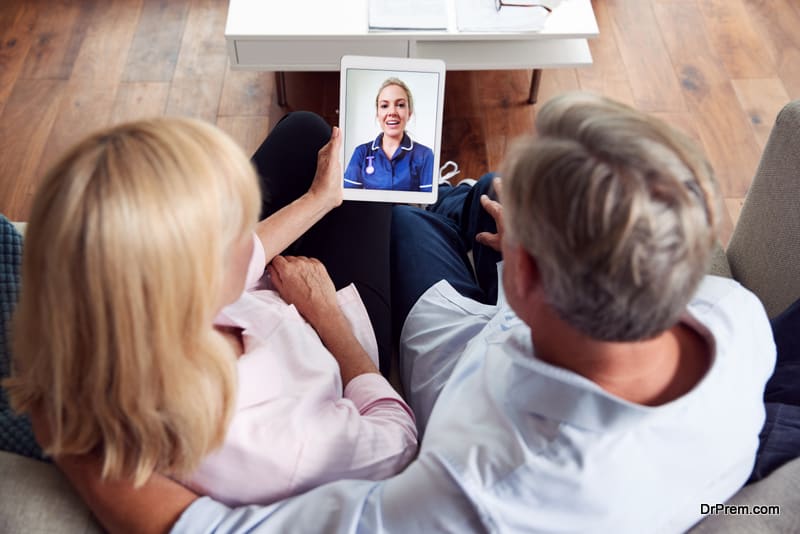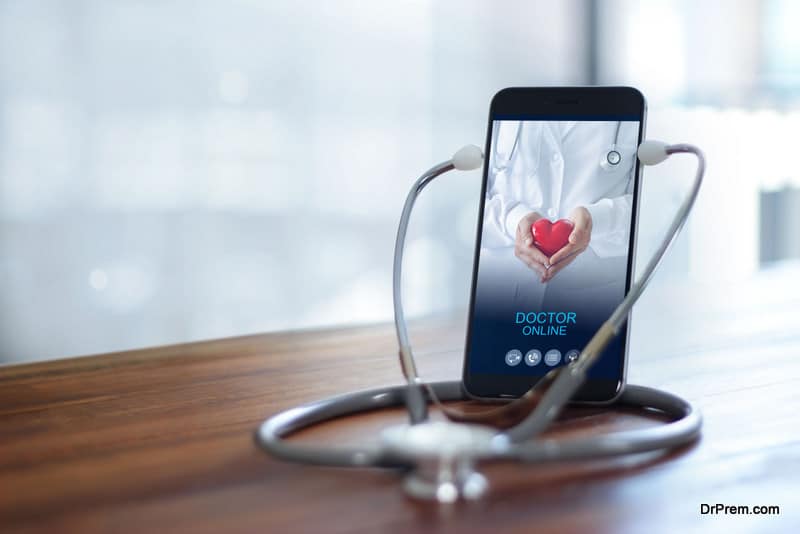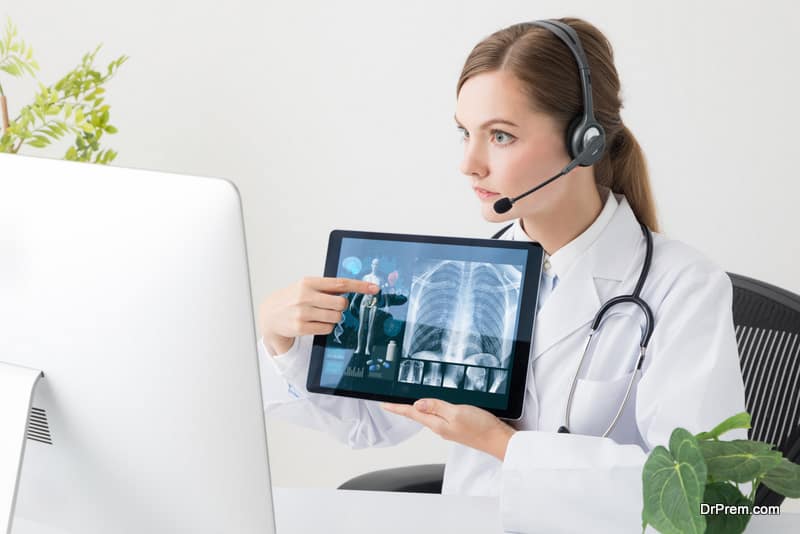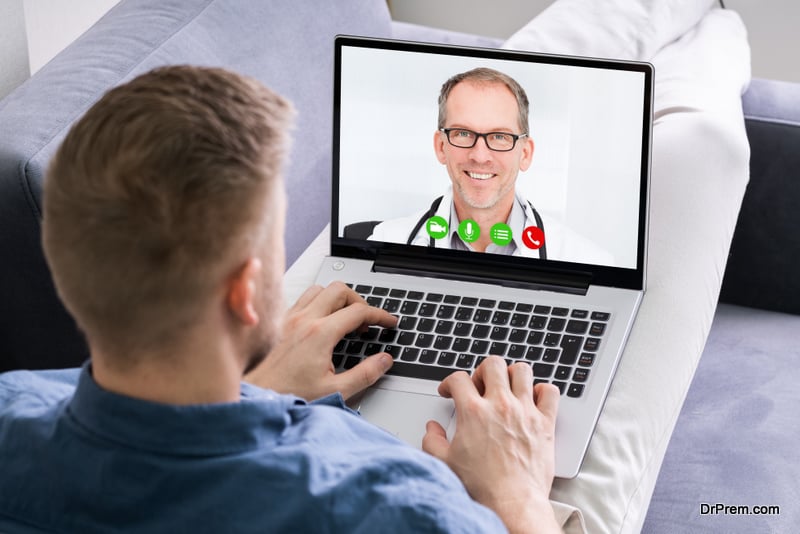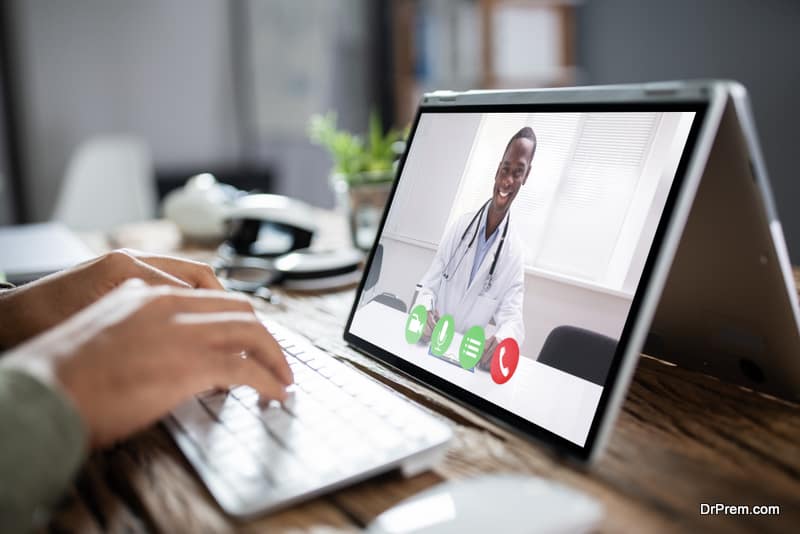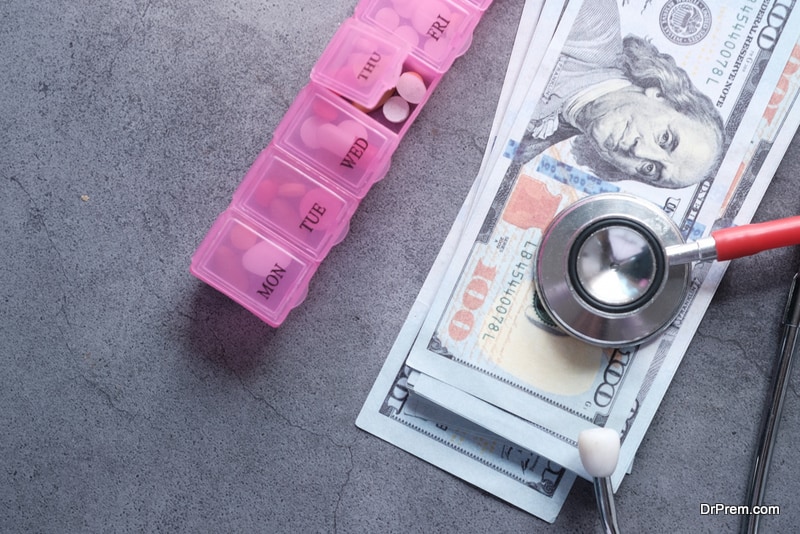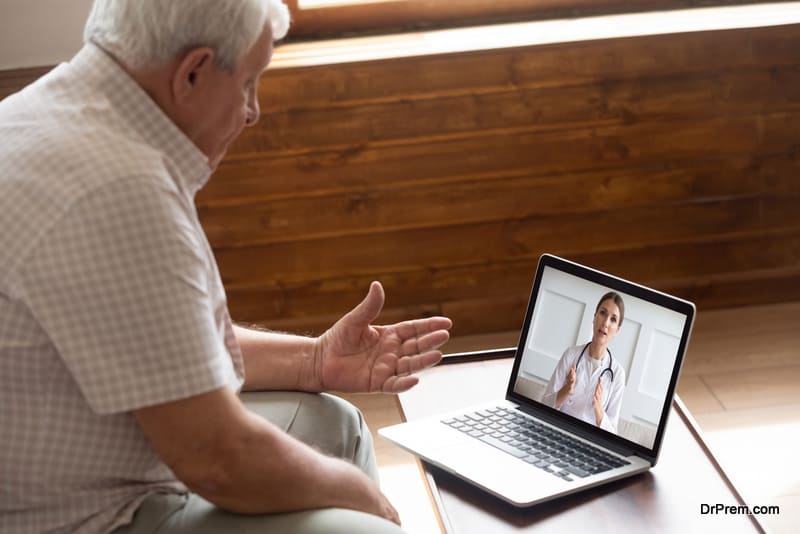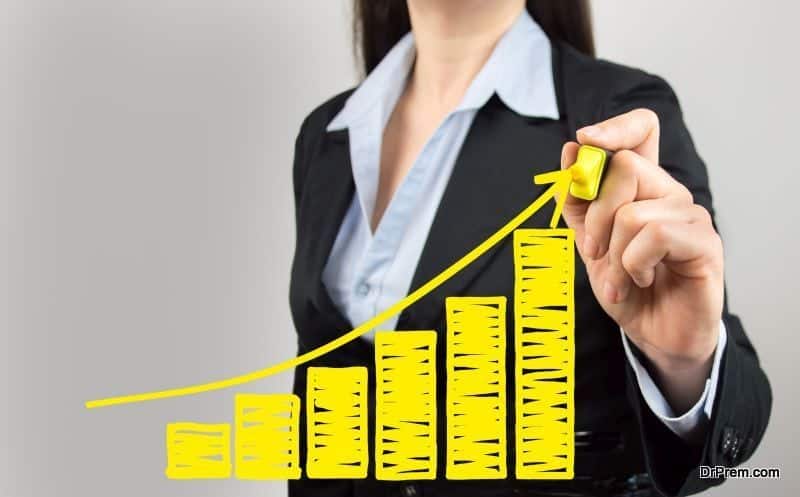Specific situations surge the demand for specific needs, and this is what we are witnessing with telemedicine in healthcare. The future of telemedicine is now! The good thing – it is gradually pervading the masses. More healthcare consumers will gain access to their medical data and use it for decision-making. Healthcare organizations, private and public will realign themselves to meet the growing demand. The process has already started with telemedicine or telehealth or telewellness services.
A 2020 GSK report shows, 84% people in Spain, 77% in the UK, 75% in Italy, and 63% in Germany feel it important to take control of their health and take off the burden from the healthcare system. Modern consumers have adopted in managing many aspects of lives remotely through technology and are willing to do the same with their health.
The result, No more crowding in consultation rooms. The future of healthcare is to go ‘virtual’ driven by telemedicine.
Present and future telemedicine market
Global telemedicine market is projected to reach $175.5bn in 2026 from $45.5bn in 2019 reports Statista.com. More than 50% of healthcare organizations in the US offer a telemedicine program. Over 50% of healthcare organizations claim telemedicine has improved quality care. Nearly 55% patients feel telemedicine has improved their healthcare decision-making capability. According to Mckinsey survey, a drastic shift in telemedicine from 11% to 76% has happened during the severe health crisis.
In April 2020, the UK’s Royal College of GPs reported of only 7% face-to-face patient consultations in comparison with 80% in 2019. Instead of stepping in a day care centre or clinic for consultation, consumers are comfortable filling e-forms for telehealth consultations. The UK government expects a majority of consultations to go online from 2021 courtesy advanced ‘telemedicine’ platforms. This may seem to be pandemic-induced impact but when the convenience factor will get more realized, virtual consultation would be the norm. The inclination towards telemedicine was felt in 2018 also in a survey by the Nuffield trust who found that 63% of the adults in UK would like to go for video consultation with their GP for minor ailments and 55% for managing chronic conditions.
Although healthcare digitization has been quite slow since the last few years, but in times of dire needs for consultation, this sector witnessed a massive adoption in telemedicine creating unique virtual consultation features overnight.
Shifting to proper digital platforms has multifarious benefits both from the patient and provider’s perspective. Organizations already with strong digital teams are rising to the top as they could fast switchover to the newer market demands. Those facing tremendous financial losses and layoffs are gaining on their digital capacity.
Telemedicine Forms
Typically, telemedicine has two forms:
- Synchronous telemedicine: Both the patient and the physician are present at the same time through a real-time connection for direct one-to-one consultation.
- Asynchronous telemedicine: Patient data is acquired and transmitted to the concerned healthcare professional or department for assessment at a convenient time offline.
Interesting facts and figures about the growth of Telemedicine
The growth of telemedicine is unstoppable and the analysts expect this market to surpass $30 billion by 2020 [as reported by PwC]. Technology has helped telemedicine to overcome the geographical limitations in providing timely healthcare support irrespective of the patient’s location. National Business Group of Health estimated that in 2017, 9 out of 10 big organizations are to provide telehealth services to the employees.
The trend is encouraging, given the problems that are continuously bugging the current global healthcare sector. Burgeoning aging population, rising global pandemics, long waiting times and most importantly the acute shortage of qualified and skilled healthcare professionals makes telemedicine an indispensable tool that will drive the future healthcare.
Recent surveys bring out interesting figures:
Telemedicine service that took off 40 years back has gained the confidence of the providers and users after decades of experimentation and trial projects. Today it is poised to change the global healthcare scenario.
The survey conducted this year by American Well, a telemedicine provider reports:
- 20% of the consumers are ready to switch over to telemedicine aided Primary care Provider (PCP) from the current ones.
- 65% of the 4000 respondents of the survey showed interest in visiting their PCP over video.
- The interest is intense among parents having kids below 18 years as is evident with 74% of them willing to see PCP through telehealth.
Other surveys show:
- Specialty telehealth services, that is those administered in rural hospitals, constitute the bulk of Medicare telehealth volumes since specialty services cover a wide range of services. The introduction of two new critical care telemedicine codes in 2017 has furthered the growth.
- Exponential growth in telebehavioral health services has been observed since last six years. Though no new codes were added in 2017, with the new legislation from Congress in 2016 to improve mental health parity through telementoring, telemedicine has maintained a striking growth.
- The volumes in virtual chronic disease management didn’t show noticeable growth earlier but with the addition of new healthcare management codes in 2017 has spurred the growth.
Remote patient monitoring continues to be the top driver:
Many healthcare organizations are successfully implementing telemedicine and Remote Patient Monitoring (RPM) technologies, and are experiencing significant benefits in terms of patient care. Some recent RPM facilities are:
- The implementation of Tele-ICU has helped in reducing hospital stay, and it has improved patient outcomes.
- The implementation of the pilot project of in-home Intensive Ambulatory Care (IAC) helped to reduce overall treatment cost by 34%, hospitalization cases by 49% and hospital stay by 50%.
Patients averaging 82 years of age were included in this real-time-in-home-monitoring program, and the results were great. Considering the necessity of this type of monitoring for the aged population, telemedicine has a more important role to play in the future.
Key drivers of telemedicine growth:
Telemedicine is likely to create new business models to meet the rising consumer demand. The healthcare sector would see:
More integrated telemedicine:
Integration of virtual care providers would enable to address the consumer demands in a better manner and also help in cost management associated with payer contracts. This would reduce the necessity for emergency visits and enable better remote patient monitoring as well.
Interactive telemedicine educating the patients:
Likely amendments in the Affordable Care Act will increase the treatment cost burden in 2017. Patient education will become imperative in helping the patients to decide on their treatment plans and cost.
Interactive telemedicine would have more demand. Patients would get to understand chronic disease management and post surgical care through several follow up sessions. They will get thorough information about his/her condition and the related treatment cost.
The health systems would be able to provide strategic pricing options based on specific patient population from which patients would get the benefits of healthcare and manage the treatment cost effectively.
Building telehealth strategy – the newest trend:
Telemedicine parity laws are improving. Reimbursements rules are also changing, enabling more patients to get under telemedicine coverage through next generation ACO (Accountable care organization) which does not mandate a patient’s location in a rural area.
Under these circumstances of meeting the requirements of a broader customer base, providers are feeling the necessity of building telehealth strategy to make the business model sustainable. The strategy focuses on offering the services to the patients who want those or are in the dire need.
Gradually, telemedicine is progressing towards a future where it would be seen as an alternative treatment choice and not as a unique experience. For those suffering from chronic ailments, telemedicine would be chosen by default.
Telemedicine to save lives of chronic patients
Telemedicine is providing more comfort and convenience to chronic patients which is life saving. Chronic illness like blood pressure, diabetes, asthma etc. can be treated from home after few initial one clinic visits. Chronic patients need a regular follow up and if this can be provided within the home comfort, nothing can be better than that.
Imagine the situation of travelling to a clinic in bad weather conditions to see your doctor as per appointment. If you miss, you may have to wait for weeks and the condition may worsen. Think of the plight of long hours of travelling suspending all normal chores for the day. Waiting for hours in the clinic and finally coming back home tired and worn out! This is the regular plight of the chronic patients especially for the aged persons whose mobility is greatly restricted. Telemedicine provides a great relief!
Telemedicine and Telemonitoring pave a new path
Various solutions are coming up which goes beyond just medicines and treatments. Technology is taking healthcare to a different level, first it was the introduction of different health monitoring devices and wearables. After that it was home automation systems and products which were equipped with different health sensors and now it is telemedicine and telemonitoring services.
The systems which are designed for telemonitoring are installed in the patient’s house so that the readings can be taken at regular intervals for evaluation. The system notifies the patient when it is time for their daily reading. The information obtained is then sent to an expert/healthcare professional/clinician so that it can be reviewed.
Based on the readings and the evaluation made, the next course of treatment is recommended. Just in case there are changes that have to be done immediately, the patient is informed right away. This helps to ensure that the patient gets the relevant treatment at the right time to prevent further complications.
Combination of Telemedicine and home healthcare technology for chronic patients
With the whole world slowly adapting the smart home concept, people are also opting for the different features and benefits of home healthcare. This is because these two technologies on their own have already proved to be really helpful in health management. The introduction of Telemedicine is the icing on the cake.
Not only do they have the ability to take care of their health and keep a track of vital readings, but they can also get the necessary guidance whenever it is needed. Just in case the readings are out of the set limits, an alert is sent out to the doctor with the necessary indications to look into things as soon as possible.
Telemedicine has paved a new path since it helps to reduce the wait time and the patient gets the necessary help. Telemedicine is a solution that is not just beneficial for the patient, but also for the practitioner since they get notified on time and the right action can be taken to save their patients life. Along with that, it also provides a comprehensive data that on the patient’s disability or heath condition so that it becomes easier to treat the patient.
The future of healthcare through telemedicine
As per the CDC, by 2023 there would be around 3.5 million Americans who would be 65 years and above. This means that the real benefits of telemedicine would be availed by the boomer generation. They will also get to see the benefits of the healthcare technology’s rapid advances. Through telemedicine, the aging population can opt for home healthcare services and manage their medical conditions in their own comfort zone. In a lot of ways, telemedicine will become an asset for everybody.
There will also be various programs which will be designed on the grounds of home healthcare and telemedicine. This will be especially for those patients who are on the extreme side of their medical condition and require a professional to be next to them at all times. With this service, it is not essential that the patient has to be only in the hospital to get the relevant care; however, they can get the same care even through telemedicine. The future systems will also be designed to detect the change in the body’s internal readings even before any symptoms can prevail. This will also help to save a lot of lives in the future.
Direct benefits of home telemedicine
Easy access from home
You get the same quality medical assistance timely from your home through your computer, smart phone, tablet or I-pad as in the clinic. Now if you are a diabetic or hypertension patient, you can monitor your blood sugar or measure your BP at home easily and report to the healthcare provider regularly. Through video conference, your doctor may ask you certain questions about your progress with the prescribed medications. This certainly does not require a physical examination every time.
Better monitoring
Often chronic patients have the tendency to postpone the clinical visits due to time constraints. They dread long distance travel and tedious waiting hours. This is quite dangerous as you skip clinical consultations based on these excuses. With telemedicine, you can maintain a regular health monitoring as the consultation can be accessed from home. Automatically, it would make you alert not to miss the timely consultation.
For patients suffering from chronic depression, telemedicine assistance can be the real life saver. Regular monitoring of psychological developments, increase or decrease in appetite and concentration or whether the patient is nurturing any negative thoughts can be tracked. Maintaining frequent touch with the sufferer irrespective of location helps in faster recovery.
Helps in growing awareness
Unawareness often invites medical disasters. You can include ignorance and negligence as well. For example, if a chronic BP patient is not educated enough of the heart attack symptoms, he many overlook it and get into a life threatening situation.
Telemedicine assistance helps in raising awareness among the chronic patients by several degrees through periodic interactions with the patients. They update the patient database instantly if they see any unusual symptom and keep the patients aware suggesting suitable preventive and treatment methods.
Aids in self-care
Chronic sufferers naturally have to give some efforts in self care because it is just not possible to run to clinic for small aids. With telemedicine, you can check with the healthcare provider about your self-care procedures whether you are doing the right thing or not. You can also get the assistance regarding further improvement in self-care. Suppose, if you feel that a specific dosage of medicine is not giving the desired result as it used to be, you can seek assistance through telemedicine for an increased dosage or change in medicine.
Saves time and money
This covers more than your travelling time and clinic visit cost. Chronic ailment management accounts for the major part of healthcare costs. Therefore, if you maintain a regular monitoring and follow-up system through telemedicine, naturally you save in emergency hospitalization and additional medication cost.
You may have to invest in procuring quality blood glucose monitor, BP monitor etc. Nowadays these have more or less become a part of household utility and do not drill a big hole in the pocket.
Easy to keep a tab on patient’s prognosis
This is the most significant benefit that telemedicine provides. Keeping a tab on patient’s prognosis is very important especially for the aged persons. They are the most vulnerable class and the prolonged suffering may have caused serious damage.
Take the case of a patient who has suffered a heart attack and is on the recovery path. It is neither recommended for such a person to travel up and down for hours nor does he possess the energy to do so. With telemedicine, it is possible to keep a tab on his recovery process by providing timely consultations.
Enables peacefulness in mind for patients
It is very natural for a chronic patient to dwell in a feeling of insecurity especially those with little or no home support. Even his family members always remain concerned about his health status.
But if the patient knows that a real time consultation is accessible on request, it makes him feel relaxed that at least he would get the timely assistance if required. This assurance is a great mental boost that instills confidence in the patient to manage his ailment better.
Factors affecting telemedicine growth:
Quite a chunk of the population is capable of communicating their demands for speedier and highly responsive diagnostics and medical care owing to their enhanced financial potential, combining the latest telecommunication techniques with healthcare.
Other factors responsible for growth of the global telemedicine market are the enhanced need for safeguarding vital medical data, large number of adjuvant reimbursement schemes and affirmative government enterprise financial involvement.
Besides, the expansion of the global telemedicine market will also move in the direction of hitting one of the largest targets of the healthcare industry. People living in the countryside or even those dwelling in the faraway distant locations away from metros can comfortably access the healthcare facilities through the use of telecom services.
Telemedicine segmentation in specialized category:
The report also provides an in-depth exploration of the global telemedicine market in a segmented break-up. The market is segmented by specialty, service type and geography.
In terms of specialty, the global telemedicine market is segmented into gynecology, internal medicine, cardiology, emergency care, orthopedics, dermatology and others.
The market will reap harvest from the neurology segment, which is progressing at the fastest compound annual growth rate of 15.9 % in the market within the ambit of a stipulated forecast period.
Service segmentation in telemedicine:
In terms of service types, the global telemedicine market is split up into Tele surgery, Tele education, Tele training, Tele consultancy, Tele care and Tele monitoring that guided the global telemedicine market in 2013 where tele-monitoring is expected to be the fastest growing segment till 2020. This can be credited to the expanding senior citizen population size that is in greater need of healing-from-home type of healthcare.
Location-wise market segmentation:
The geographical segmentation of global telemedicine market reports North America to be topping the list in terms of Dollars earned in 2013. However, the fastest growth rate in the market over a fixed forecast period is accredited to Asia Pacific because of its thick population density and a fast developing healthcare set up.
The telemedicine market can be segmented into the following regions across the globe:
1. North America.
2. Europe.
3. Asia Pacific.
4. Rest of the world.
Telemedicine – The future of healthcare:
Medicine and medical services are continuously changing profiles in the present century. Novel technologies and innovations are helping care providers bring back patients from the jaws of death. But as the mobile advancements are developing, manual care may become medical museum stuff.
Telemarketing is fundamentally attending, testing and curing patients over the phone.The basics haven’t changed but methods have undergone a massive transformation. Getting the entire thing done has turned much easier with a new kind of twist that the users would find pleasant. When you are in call, you answer the phone and treat a patient
Telemedicine has now come under the limelight. Doctors interact with patients via facetime and virtual reality or other types of Apps like virtual lab testing. There is always a time and cost element associated with our needs. There are cost efficient allergy kits at home STD tests which the consumers have never heard before. It establishes a link between the customer and the medicine providers. For patients, telemedicine is more affordable, easy, efficient and less time consuming.
Cybersecurity comes first
With the growing demand and opportunities come tougher challenges, and Telemedicine is one of the vulnerable points of data breach. As the recent data breach event of Babylon Health came to the forefront, digital professionals are devoting more attention to patient data protection and privacy.
Lax regulatory relaxation – biggest threat in cybersecurity
Recently, a letter published in the Journal of the American Medical Informatics Association by a Harvard Medical School team clearly warned of substantial security concerns regarding telehealth. Lifting regulatory restrictions in different communication apps can make telemedicine services vulnerable to security attacks and information breaches warned the organizational cybersecurity researcher.
The relaxations in Apple Facetime, Facebook messenger chat, Google Hangout, Zoom and Skype for telemedicine might have added convenience to patients to access virtual healthcare, at the same time has raised concerns regarding inadequate data security.
Different digital platforms aligned themselves swiftly to meet the sudden spike of demand but without proper oversight of cybersecurity. Organizations need to reinforce their digital platforms and teams with proper security measures so as to prevent greater data-breach disaster in future.
The need for a multi-pronged approach:
- Awareness is important.
- Employees need to be adequately trained to quickly catch the signs of cyber attack especially through phishing mails.
- Organizations need to follow best practices in cybersecurity management through software updation, data encryption, antivirus installation, implementing two-factor authentication and adhering to local cybersecurity regulations.
Tele health is now going to revolutionize how the physicians practice medicine and the organizations have shown interest so that they can have a competitive advantage in the future.
Interestingly, even Walgreens and Walmart are getting into the healthcare business. There is a huge demand from all quarters. Telemedicine and Tele marketing of healthcare services is the answer!
Telemedicine – Its limitations:
The report also alerts its consumers of a multitude of constraints related with the global telemedicine market, the most pronounced of which is the present dearth of skilled manpower to operate the devices in the market.
The absence of quality professional training for the use of telemedicine is compelling healthcare organizations to receive negative response at times. Another issue pestering the global telemedicine market is the want of credence that telemedicine can deliver to patients, regarding the appropriateness of medical service evaluation.


